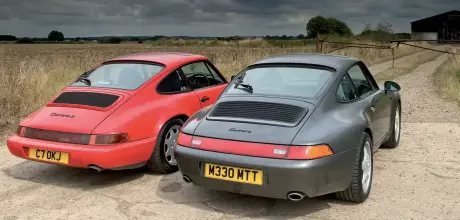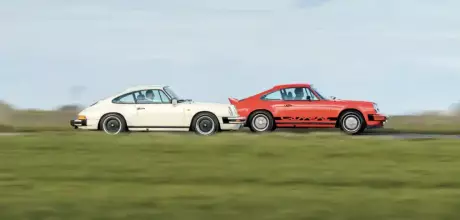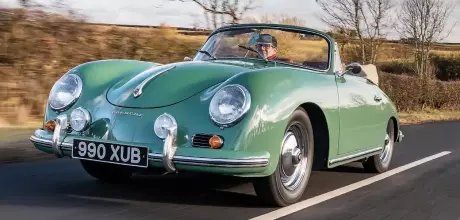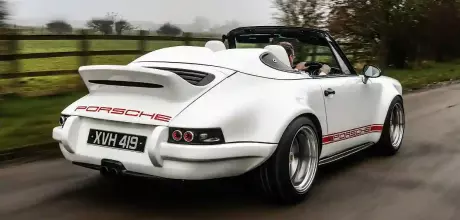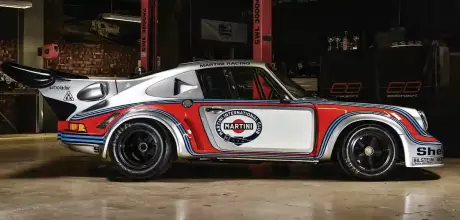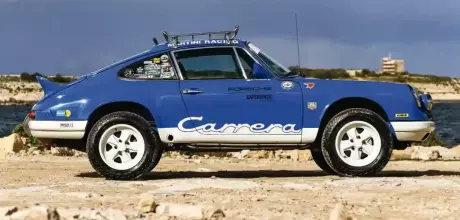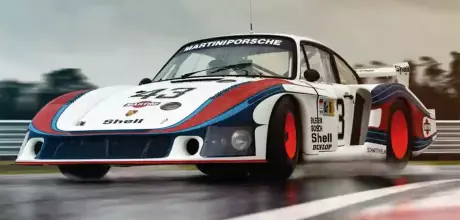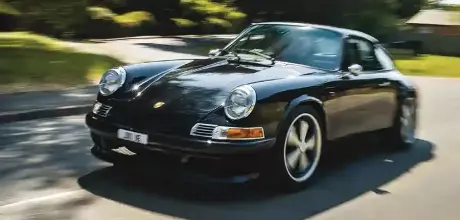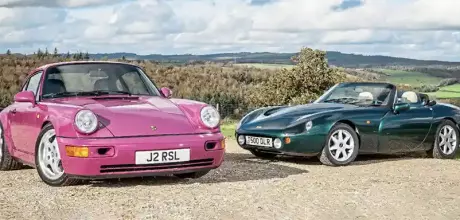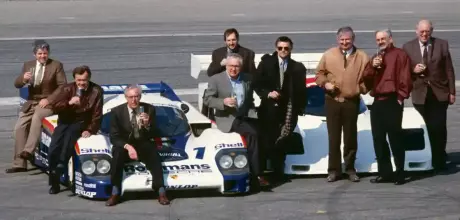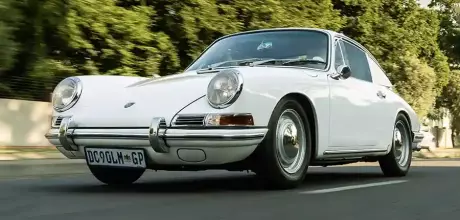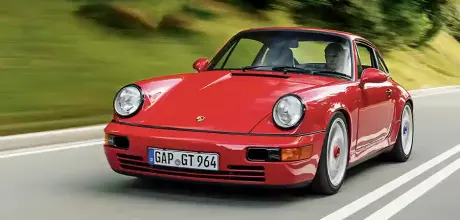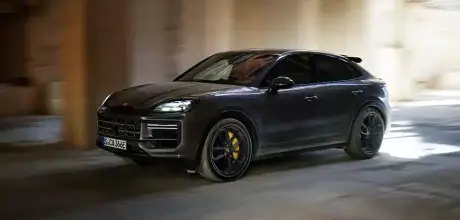Search by the «porsche» tag
Porsche 911 G-Series and 930 → From 1974 Porsche 911 Carrera 2.7 to 1989 911 SC: why these are the 911s to buy now
Editor's comment
The 911s that make sense
When I was a pup – well, probably in my teens, which means my opinions were even more virulent yet even more unfounded – I didn’t much care for new Porsche 911s. You couldn’t blame me: I was born in 1968, so when I was most full of revolution and rebellion and looking for a system to smash, 911s were at their new-establishment peak, that thankfully brief window in the mid-80s when all the cliches were formed. Red-braces wearing yuppie a-holes going backwards into hedges in matching Guards Red impact-bumper 911s while swilling from a bottle of Pol was real (though perhaps rather less frequent than the tabloids made out). As was the 911’s guilt by association, sadly.
By the time I got into the classic car magazine game in the mid-90s, the big-bumper generation of Porsche was still unfashionable, all too often the cars were uncared for and poorly maintained daily drivers at the bottom of their value curve. They were what you bought if you couldn’t afford a ‘proper’ Porsche.
To those of us of a certain age, I guess they still are to a lesser degree, but to an only slightly younger generation of enthusiasts, the one that has also embraced all those 1970s shades of brown that still make my blood curdle – russet, sable, oatmeal et al – there seems to be no trace of that stigma. Of course, you suspect that they might change their minds the moment they have the wherewithal to test drive a 1968 S, but for now I am quite jealous that they can enjoy the later cars without all the social baggage that used to come with them, used to spoil them. That’s partially a comment on how quickly society and perceptions move on in the modern world, but mainly it’s testament to the longevity of a brilliant design.
Heck, the cars we are rightly celebrating this issue were in production so long that they easily outlived their own negative stereotypes in period. They emerged in 1974 and bowed out in 1989, they pretty much saw off their own succession plan when the front-engined cars came and went, and now they seem far more related to what came before than to what came after.
After all, with all the world’s 964s being hoovered up for restomods and 993s being sufficiently evolved to be an entirely different car, these G- (and on) Series 911s are suddenly looking extremely appealing in their own right rather than merely as an alternative to something you can’t afford. In the words of the wise Glen Waddington: ‘It’s the only “purebred” 911 that still exists in reasonable quantities and for almost sane money.’
When I was a pup – well, probably in my teens, which means my opinions were even more virulent yet even more unfounded – I didn’t much care for new Porsche 911s. You couldn’t blame me: I was born in 1968, so when I was most full of revolution and rebellion and looking for a system to smash, 911s were at their new-establishment peak, that thankfully brief window in the mid-80s when all the cliches were formed. Red-braces wearing yuppie a-holes going backwards into hedges in matching Guards Red impact-bumper 911s while swilling from a bottle of Pol was real (though perhaps rather less frequent than the tabloids made out). As was the 911’s guilt by association, sadly.
By the time I got into the classic car magazine game in the mid-90s, the big-bumper generation of Porsche was still unfashionable, all too often the cars were uncared for and poorly maintained daily drivers at the bottom of their value curve. They were what you bought if you couldn’t afford a ‘proper’ Porsche.
To those of us of a certain age, I guess they still are to a lesser degree, but to an only slightly younger generation of enthusiasts, the one that has also embraced all those 1970s shades of brown that still make my blood curdle – russet, sable, oatmeal et al – there seems to be no trace of that stigma. Of course, you suspect that they might change their minds the moment they have the wherewithal to test drive a 1968 S, but for now I am quite jealous that they can enjoy the later cars without all the social baggage that used to come with them, used to spoil them. That’s partially a comment on how quickly society and perceptions move on in the modern world, but mainly it’s testament to the longevity of a brilliant design.
Heck, the cars we are rightly celebrating this issue were in production so long that they easily outlived their own negative stereotypes in period. They emerged in 1974 and bowed out in 1989, they pretty much saw off their own succession plan when the front-engined cars came and went, and now they seem far more related to what came before than to what came after.
After all, with all the world’s 964s being hoovered up for restomods and 993s being sufficiently evolved to be an entirely different car, these G- (and on) Series 911s are suddenly looking extremely appealing in their own right rather than merely as an alternative to something you can’t afford. In the words of the wise Glen Waddington: ‘It’s the only “purebred” 911 that still exists in reasonable quantities and for almost sane money.’
Editor's comment
The lengths we’ll go to
More often than we would probably like to admit, amazing stories fall into Octane’s lap and a tentative email with a picture attachment sets in motion a chain of events that ends with you reading about a very special car. Every one of those easy wins, however, is counterbalanced by something that takes a lot more time, effort and, inevitably, money to put together. And in 28 years in this game I cannot remember a more fraught process than our collective quest to get a Schuppan 962 CR into Octane. The reason for wanting to is obvious – great car, great story, plus the compulsion finally, and for the first time, properly to tell the world how this remarkable Le Mans car for the road measures up to its billing.
The reasons we had to go the extra mile were myriad, but with a pool of fewer than ten cars to choose from it was never going to be easy. The first car we lined up was actually the one we ended up featuring, but when under a previous ownership. Photographing it and writing about it were fine, but driving it, we were told, was a strict no-no. Now, I don’t want to come across as all prissy here but, though we were extremely grateful for the offer, we reckoned we were probably only going to feature a Schuppan once and not to drive the thing on a public road would leave the biggest – to my mind, the essential – question, unanswered. It would be to deny the car’s raison d’etre.
Next up was the final car, tracked down in the USA. An excellent example as it turns out, but such was our fanaticism by then that the fact it was built as a prototype and later converted was enough for us to discount it. With hindsight, we were being overly pedantic. Then came the freshly restored winner of the 2023 London Concours. We chased, followed, harangued, a date was set to drive it between its concours victory and its shipping to the US – then it rained on the day and it wasn’t allowed out to play. After that the trail went cold. I had just about given up when Simon Kidston, not noted for letting any car stand idle regardless of its rarity, value or mileage, wondered aloud to racer-writer Dickie Meaden whether Octane would be interested in giving that very first car we set out to drive a proper seeing-to (on track as well as dream roads) in Wales. Unsurprisingly, we were. So what you see in Octane this month may look like other stories on the surface, but it is actually the product of more than five years of work and at least three times the investment of a normal article (shhh, don’t tell the bosses). Because you are worth it.
More often than we would probably like to admit, amazing stories fall into Octane’s lap and a tentative email with a picture attachment sets in motion a chain of events that ends with you reading about a very special car. Every one of those easy wins, however, is counterbalanced by something that takes a lot more time, effort and, inevitably, money to put together. And in 28 years in this game I cannot remember a more fraught process than our collective quest to get a Schuppan 962 CR into Octane. The reason for wanting to is obvious – great car, great story, plus the compulsion finally, and for the first time, properly to tell the world how this remarkable Le Mans car for the road measures up to its billing.
The reasons we had to go the extra mile were myriad, but with a pool of fewer than ten cars to choose from it was never going to be easy. The first car we lined up was actually the one we ended up featuring, but when under a previous ownership. Photographing it and writing about it were fine, but driving it, we were told, was a strict no-no. Now, I don’t want to come across as all prissy here but, though we were extremely grateful for the offer, we reckoned we were probably only going to feature a Schuppan once and not to drive the thing on a public road would leave the biggest – to my mind, the essential – question, unanswered. It would be to deny the car’s raison d’etre.
Next up was the final car, tracked down in the USA. An excellent example as it turns out, but such was our fanaticism by then that the fact it was built as a prototype and later converted was enough for us to discount it. With hindsight, we were being overly pedantic. Then came the freshly restored winner of the 2023 London Concours. We chased, followed, harangued, a date was set to drive it between its concours victory and its shipping to the US – then it rained on the day and it wasn’t allowed out to play. After that the trail went cold. I had just about given up when Simon Kidston, not noted for letting any car stand idle regardless of its rarity, value or mileage, wondered aloud to racer-writer Dickie Meaden whether Octane would be interested in giving that very first car we set out to drive a proper seeing-to (on track as well as dream roads) in Wales. Unsurprisingly, we were. So what you see in Octane this month may look like other stories on the surface, but it is actually the product of more than five years of work and at least three times the investment of a normal article (shhh, don’t tell the bosses). Because you are worth it.
Editor's comment
A stunning Guards red Porsche 911 Carrera 964 sits among the picturesque scenery south of Munich. However, all is not as it seems. Underneath this unmistakable silhouette lies a whole new concept, and the hills are about to.


